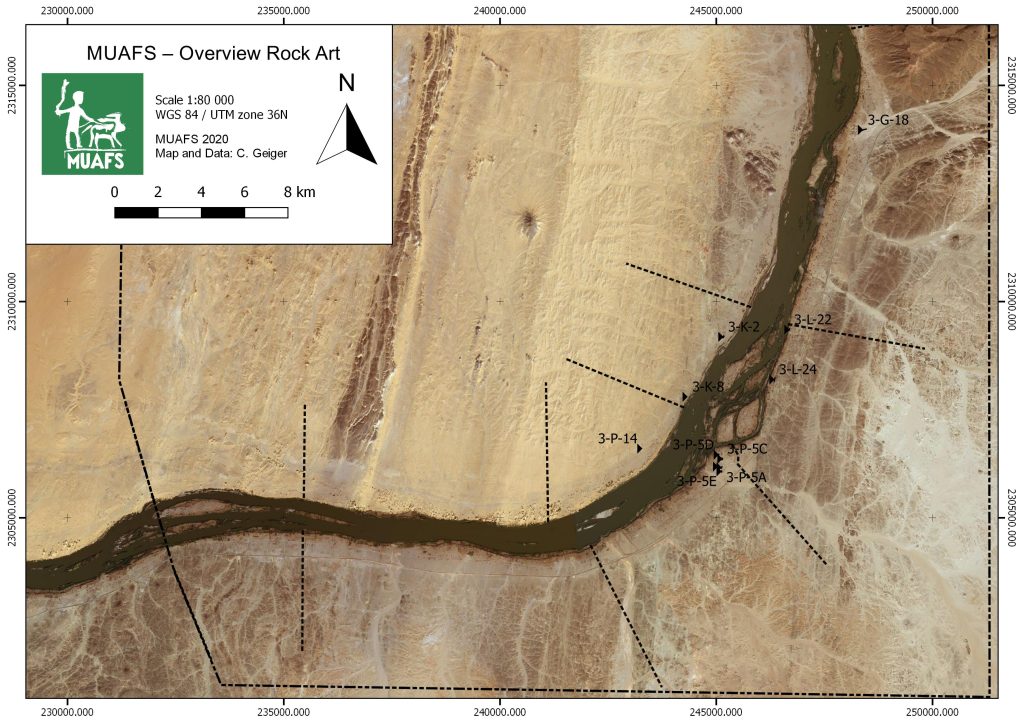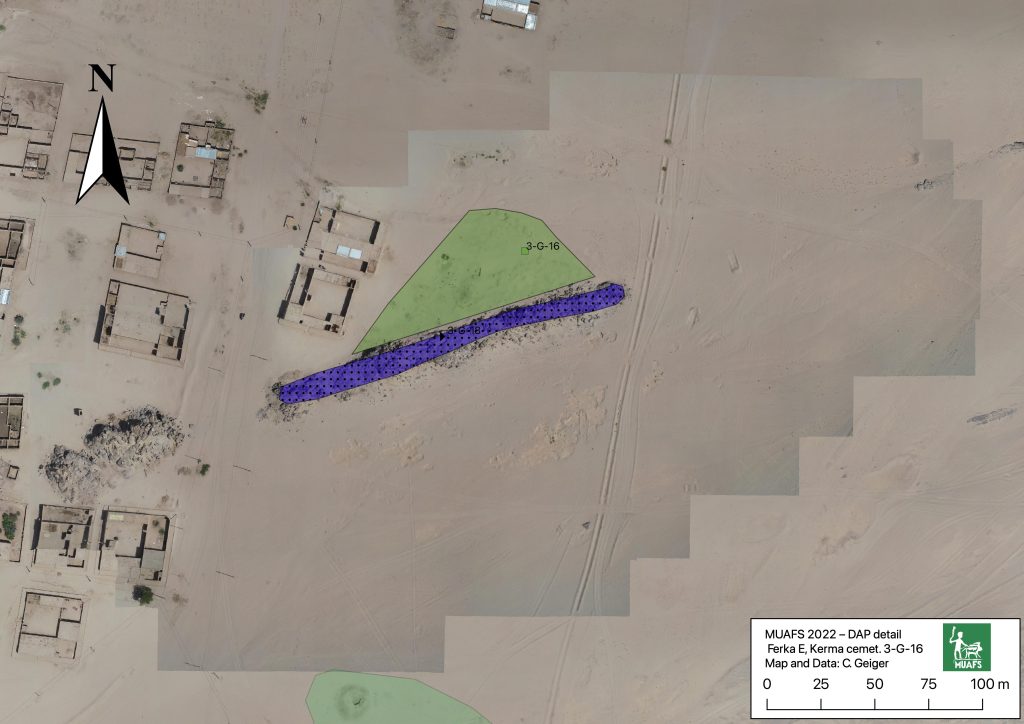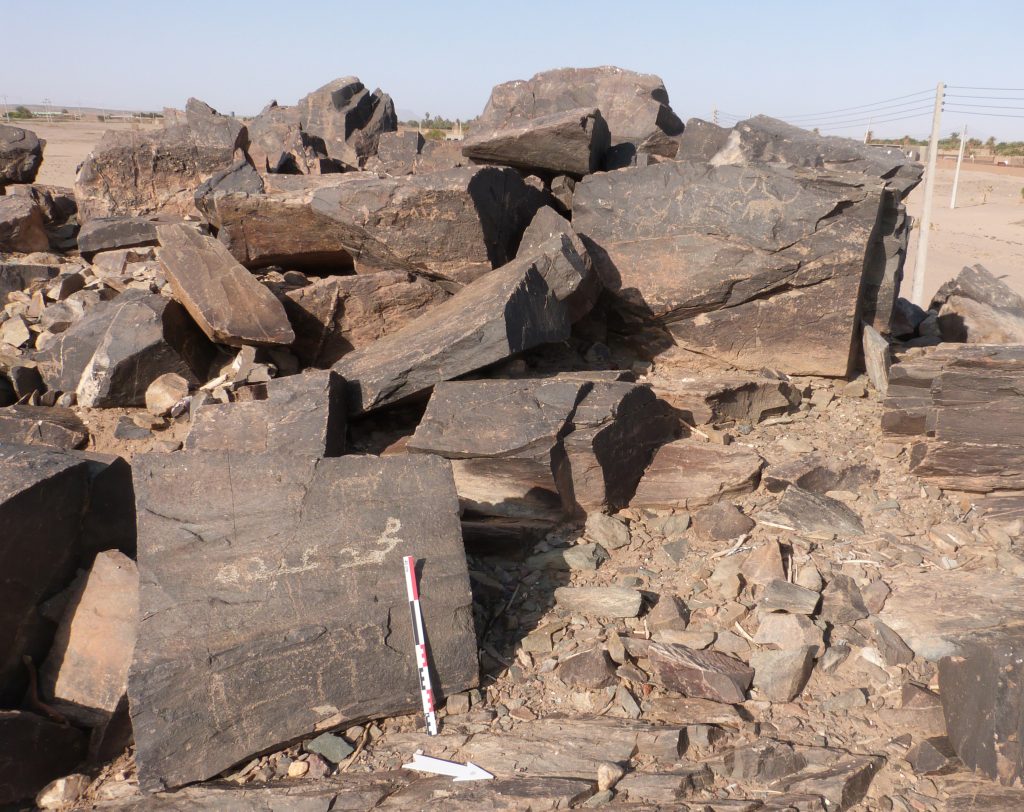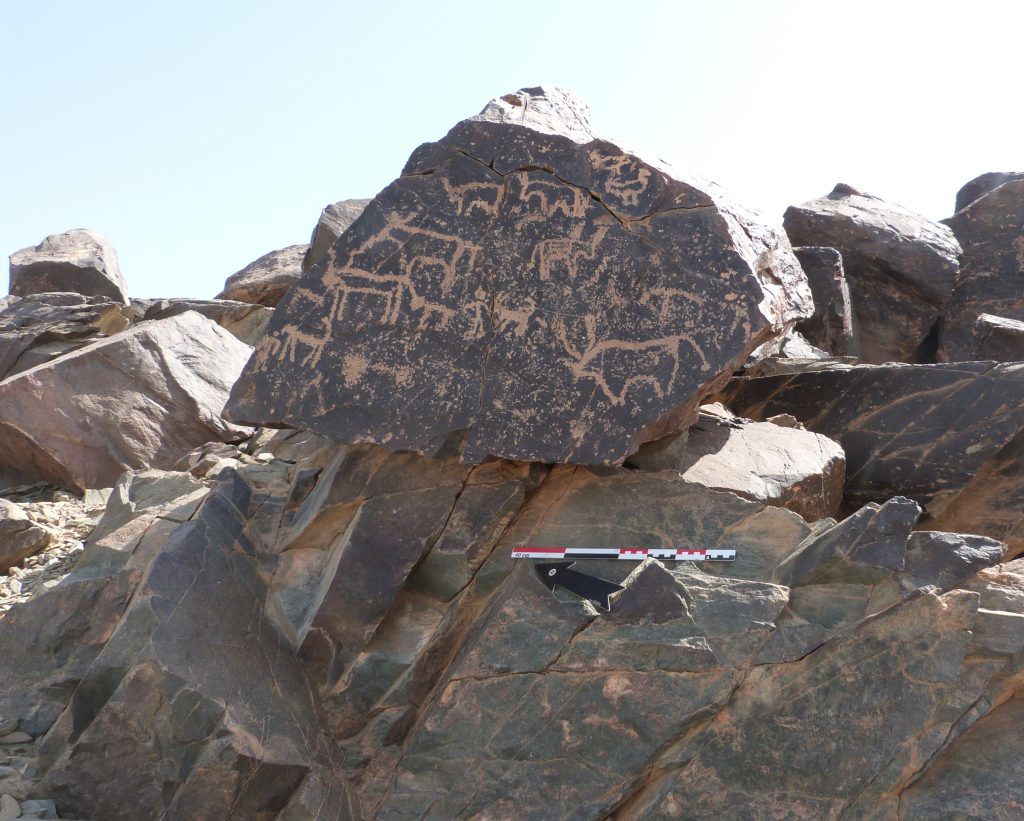Rock art in Sudan has become one of my favourite topics ever since I worked in the Fourth Cataract region in the 2000s. Within the MUAFS concession between Attab and Ferka, there are not many sites with rock drawings. Unsurprisingly, rock art is restricted to certain areas with fitting geology and large boulders – in our concession these are the districts of Ferka, Mograkka and Kosha (Fig. 1). Close to Mograkka, one particularly handsome engraving was chosen as the basis for the MUAFS logo.

Some of these sites are located in close proximity to Kerma funerary sites. This holds especially true for 3-P-14 (Kosha West), 3-G-18 (Ferka East) and 3-P-5 (Kosha East).
3-G-18 is located on rocky outcrops within the large plain of Ferka and directly adjacent to the Kerma cemetery 3-G-16 (Fig. 2). Kerma cemetery 3-G-19 is also not far away. These sites are of particular interest because they are the northernmost Kerma sites in our concession.

The largest rock art site is located at the border between Mograkka and Kosha East, site 3-P-5, with more than 400 individual rock art pictures (Vila 1976, 79‒87). The motifs comprise mostly cattle, antelopes, some human depictions, birds, dogs and other animals (Figs. 3-4).


While Vila left the dating as unclear, most of the rock art pictures at 3-P-5 seem to belong to the Kerma period (Budka 2020). Similar to 3-G-18 in Ferka, there are Kerma sites in the close proximity to 3-P-5 which support this dating.
In all phases of the Kerma culture, the dominant motif of rock art is cattle. Of course this reflects the importance of cattle herding to Kerma people – some aspects of which were recently addressed by Jérôme Dubosson at one of our DiverseNile Seminar Series 2022. In the words by Louis Chaix: “Cattle are a key constituent element of the civilization of Kerma. They played a major role in the diet of the population and as a source of secondary products such as milk, hides, and raw materials for making tools. They also contributed to agriculture as traction animals.” (Chaix 2017). Within the DiverseNile project, we aim to address the local role of cattle for the Kerma people by means of a multidisciplinary approach, combining landscape archaeology with bioarchaeology and of course analysing all kinds of archaeological findings like animal bones, animal figurines and engraved figures of cattle in rock art.
Coming back to the question of rock art, the spatial proximity of rock art panels depicting cattle and Kerma funerary sites was already noted by Cornelia Kleinitz in the Fourth Cataract region (Kleinitz 2007). As tempting as it is to link these rock drawings with Kerma funerary cult, at the Fourth Cataract and also in the MUAFS concession, a precise dating of cattle depictions in rock art often remains impossible.
Nevertheless, we will soon be back in the field in Sudan – one of the goals for the 2023 season is to expand the documentation of rock art in our concession, with a special focus on possible Kerma sites. Contextualising rock art sites clearly has much potential for a closer understanding of their date and function.
References
Budka, Julia 2020. Kerma presence at Ginis East: the 2020 season of the Munich University Attab to Ferka survey project. Sudan & Nubia 24, 57-71.
Chaix, Louis 2017. Cattle: a major component of the Kerma culture (Sudan). Edited by Umberto Albarella, Mauro Rizzetto, Hannah Russ, Kim Vickers, and Sarah Viner-Daniels. Oxford Handbooks Online 2017 (April), 15 p.; 4 figs. DOI: 10.1093/oxfordhb/9780199686476.013.2
Kleinitz, Cornelia 2007. Rock art and archaeology: the Hadiab survey. Sudan & Nubia 11, 34-42
Vila, André 1976. La prospection archéologique de la Vallée du Nil, au Sud de la Cataracte de Dal (Nubie Soudanaise). Fascicule 4: District de Mograkka (Est et Ouest), District de Kosha (Est et Ouest). Paris.
